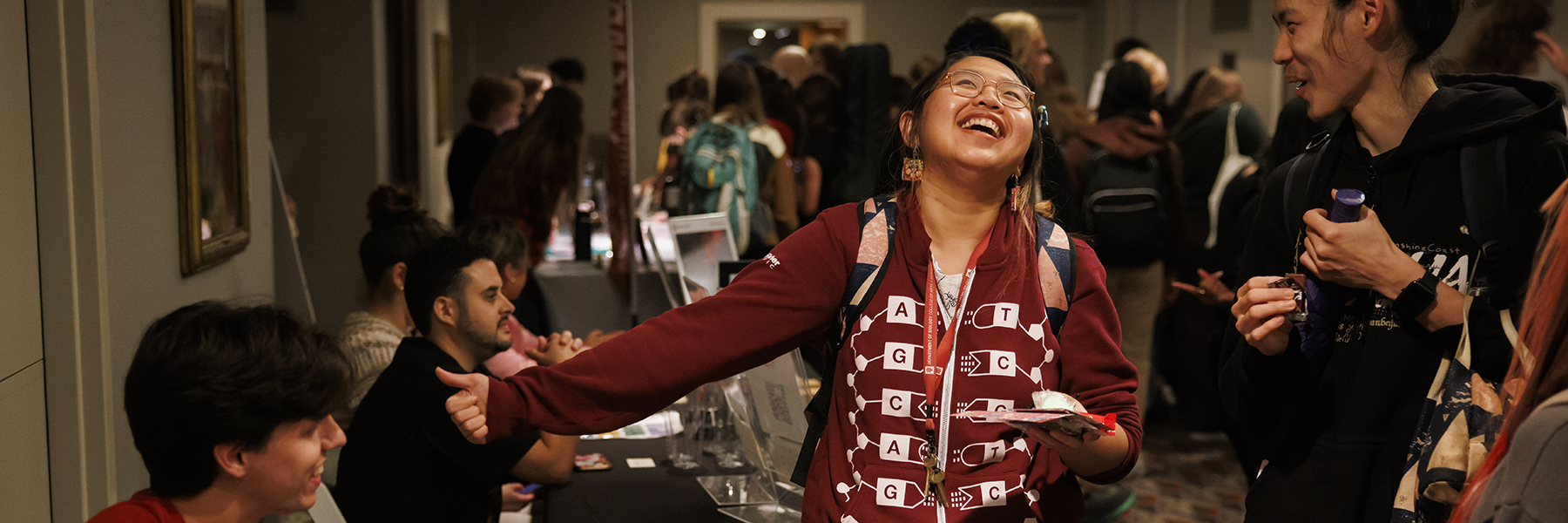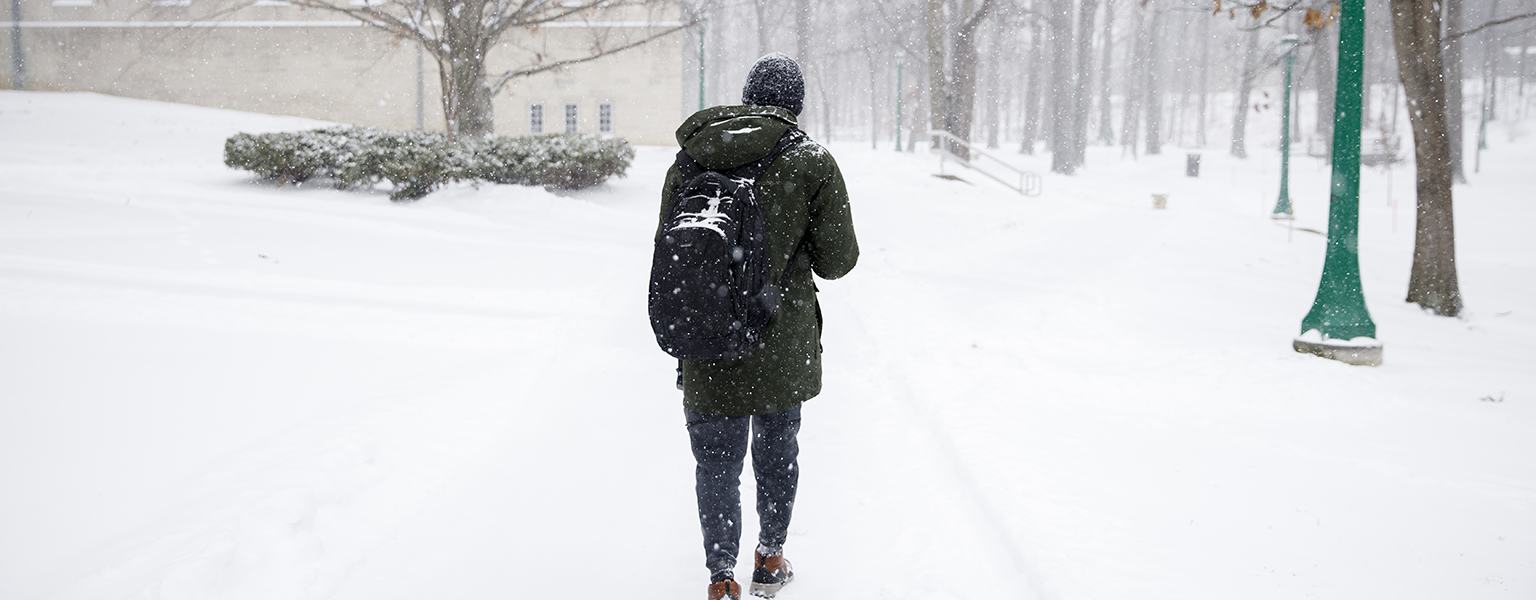Dec. 13, 2023
Recently, Indiana University announced investments in arts and humanities research through new leadership roles and expanding opportunities for communal growth to ultimately shed light on the incredible culture of the arts. Provost Rahul Shrivastav described how art allows us to “question our assumptions, probe the contexts in which we live and dare to design transformative systems and objects.”
Art brings people together, fosters thriving cultures, and can bring great meaning to our lives, but what is art exactly? Through a new Into the Arts series, we aim to complicate and expand what we understand arts and humanities to be. Over the coming months, we will confer with those who make and study these concepts across campus, bringing you stories and recommendations that hopefully stretch our minds and bring us a little closer together.
As a student of both science and art, myself, studying psychology and English, I’ve explored and enjoyed various demonstrations of how the arts not only connects different communities but encourages critical thinking. IU gives me resources, events, and courses that appeal to my interests and push me to dig deeper into my materials. Whether I’m going to First Thursdays to watch a live musical performance, going to a class to discuss a piece of literature, or working in a research lab to analyze a study, the arts are all around me here on campus, as well as beyond it through the connections I make and the impact of IU's work.
The arts and humanities is an umbrella term that encapsulates studies like literature, religion, music, philosophy, painting, and more. Art itself is largely understood to be a form of self-expression and an outlet to channel thoughts and feelings into creation. Sometimes words are lacking, and other times they are exactly what we need. It could be a mix of both, like a song. Art has been around, albeit in quite different ways, since the earliest human interactions — if not earlier. So, while it may be difficult to describe at times, it is clearly a fundamental part of living.
Now picture this: it’s 5 pm, it’s getting dark outside, and you start to feel a bit gloomy looking at the overcast sky. As fall transitions into winter and night comes earlier and earlier, you lose energy and feel a bit lonely due to the cold weather.
According to studies conducted and commissioned by global health service company Cigna, more than half of all people feel the same way, with race, age, gender, and income influencing how individuals and communities experience loneliness.
An estimated 5% of U.S. adults experience a form of seasonal depression officially called seasonal affective disorder, though many may not formally recognize they have this common disorder. That’s around 17 million people who feel down, stressed, or struggle with appetite as summer turns into the colder months of fall and winter.
One way to combat these “winter blues” is through arts engagement. The arts and humanities have a wide range of activities and fields of study, and they can be beneficial for your mental health whether you try something new or engage with your favorite medium. While art therapy serves as a professionally guided route to integrating art with mental wellbeing, simply coloring a drawing or singing a song has been shown to produce lower cortisol levels, suggesting that art can help manage stress.
It can be hard to feel integrated during winter, as frigid temperatures drive people inside. However, art is often a great connection point for people to come together and enjoy each other’s company. Going to musicals, concerts, pottery classes, or book clubs are just some examples of how art brings communities together. I, for one, can relate to this, for even as I write this piece, I feel good knowing I brought something to life and can share it with others.
You don’t have to be “good” at whatever you choose to engage in — the core idea is that you get enjoyment and purpose from creating or experiencing forms of art. It can be inspiring, relaxing, or even emotionally moving to take some time to be mindful and appreciate all the ways we can creatively express ourselves.
As night sets in, you close the door to shut out the bitter cold, settle into your chair, and cozy up with your favorite book. Maybe your friend invites you to go see a ballet with her, or you decide to learn a new song on the piano. No matter what speaks to you, art is there for you and can be a great way to feel warm, even if the weather is cold.
Ellen Sanderson is an IU student and editorial intern in the Office of the Provost.



